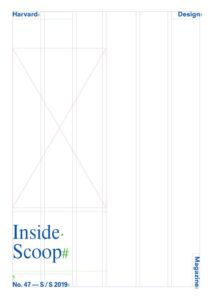FAMILIA: Corporeal Care and Affective Ties
What models of the future family home might emerge from the refracted visions of thirteen theory dudes, six tech and logistics corporations, six proto-starchitects (five men, one woman), three bad tech-dystopia movies, four unnamed mothers, two hashtags, one emoji, one London gay bar, one Marxist feminist, one engineer husband and home-economist wife pair, and one Kim Kardashian book? Answer: a future home in which “blood relation,” “marital love,” and labor power “offer less futurity” than the “financialization of capital” and the datafication and algorithmicization of life itself. A future home in which bodies become information and “lived realities” become tracked behaviors. A future home in which military-industrial networked technologies invade the private sphere and alienate its inhabitants from one another, disaggregating the family and transforming its individual members into distinct data points. A future in which even domestic architecture itself becomes a “vector of information” that’s mapped and monetized.
That motley litany encompassing starchitects and Kardashians—and way more Great Men than feminists—represents the reference list of ÅYR’s “FAMILI: Proxy Paranoia or Technological Camaraderie.” As with machine learning algorithms, whose performance is altered by potential biases inherent in its training data sets, ÅYR’s future-family projection is largely the product of its input: a data set in which tech dystopianism and Western theory are well represented. We shouldn’t be surprised. As Jacob Silverman writes in The Baffler, most futurism “furnishes market-based thinking without any acknowledgment of other belief systems . . . Nor does it see any areas of life immune from commoditization.” The future, he says, quoting scholar Ziauddin Sardar, “is defined in the image of the West.”
Yet, given the fact that families both in and beyond the West increasingly take on forms different from the homogeneous, heterosexual nuclear unit historically idealized in real-estate and consumer-product advertisements; given the central but historically undervalued role that women play in this realm; and given that electrification—let alone datafication—still hasn’t reached nearly 10 percent of the world’s homes, we might need to tweak our “domestic projection” data set to acknowledge other ways of domestic living and other domestic values. Those models should include other cultures, politics, and economies of domesticity—ones in which nannies from the Global South provide corporal care while wealthy homeowners perform digital labor; ones in which extended, multigenerational families (tied together through “blood relations”) live together; ones in which working-class families can barely pay the rent despite the onerous labor of their fleshy bodies. These “lived realities” are indeed still financialized and tracked, but they’re also carnal and affective and steeped in cultural traditions and legacies of inequity.
A lot has changed in the four years since “FAMILI” appeared. The United States’ own first family represents a regression to midcentury gender roles and racial prejudices. Their White House is no hub of intelligence, algorithmic efficiency, and domestic bliss. Instead, it’s a den of insipid cable news and jejune Tweets, McDonald’s takeout and model wives, his-and-her bedrooms and blaring television sets, family crime and compulsive lies. This home—and the lifestyle and ideology it embodies—serves as a model for #MAGA families and armchair-domestic despots around the world. It’s its own dysfunctional white-supremacist algorithm.
Trump’s pathetic, bombastic cries of #NoCollusion and #WitchHunt suggest that he’s not moving out anytime soon. They also reveal an underlying fear of emasculation and eviction. Similarly, ÅYR begins its essay by asking “‘Will it replace me?’ . . . The context of the query,” they explains, “is home automation (#it) and its potential ‘side effects’ on members of the nuclear family (#me).” Yet impeachment and automation aren’t the only forces threatening domestic harmony. There are other hashtags representing the resurgent power of marginalized bodies: the women bent over the sink, the families of color trapped in poverty, the immigrant denied adequate housing. #MeToo and #BlackLivesMatter represent subjectivities and “lived realities” far more complex and humane than the egocentric and objectifying #me and #it. They remind us that other forms of community and care, other ways of making family and home, must be possible.
Shannon Mattern is professor of anthropology at the New School for Social Research. She teaches and writes about archives, libraries, and other media spaces; media infrastructures; spatial epistemologies; and mediated sensation and exhibition. She is the author of The New Downtown Library: Designing with Communities (2007) and Deep Mapping the Media City (2015).
